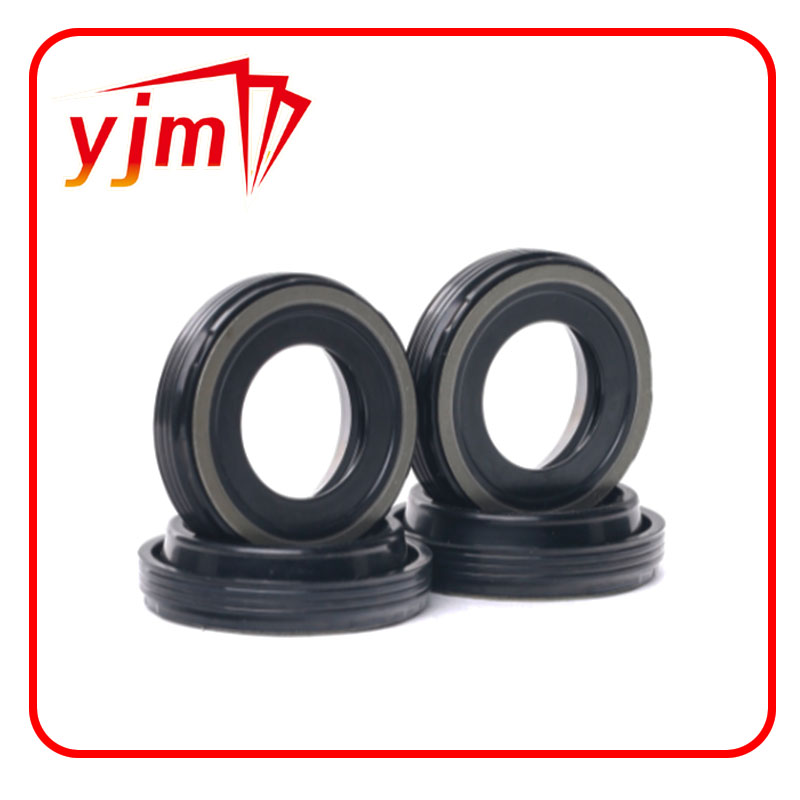Understanding O-Ring Face Seals for Enhanced Performance and Reliability in Sealing Applications
Understanding O-Ring Face Seals
O-ring face seals are essential components used in various industries to provide effective sealing solutions. They are designed to prevent fluids and gases from leaking between stationary and rotating parts in machinery and equipment. This article delves into the design, functionality, applications, and benefits of O-ring face seals.
Design and Functionality
An O-ring face seal typically consists of an O-ring and two face surfaces that come into contact with each other. The O-ring is a circular elastic loop made from rubber or a synthetic elastomer, while the face surfaces are rigid components, often made of metal or hard plastic. The O-ring fits into a groove on one of the face surfaces, creating a sealing interface when the other surface is pressed against it.
The primary function of O-ring face seals is to create a reliable barrier that prevents leakage. As pressure is applied between the two mating faces, the O-ring deforms to fill any gaps, thus providing a tight seal. The elasticity of the O-ring allows it to absorb vibrations and thermal expansion, which are common in many industrial applications.
Applications
O-ring face seals are versatile and can be found in numerous applications across various sectors. In the automotive industry, they are used in engines, transmissions, and hydraulic systems to maintain fluid integrity. In aerospace, O-ring face seals play a crucial role in ensuring the functionality of fuel systems and hydraulic circuits under extreme conditions.
o ring face seal

Furthermore, the oil and gas industry heavily relies on O-ring face seals for equipment that operates under high pressures and temperatures. They are also used in chemical processing, food and beverage manufacturing, and pharmaceuticals to ensure the safe transport of liquids and gases.
Benefits of O-Ring Face Seals
One of the primary advantages of O-ring face seals is their simplicity in design, which translates to easier installation and maintenance. Unlike complex sealing mechanisms, O-ring face seals require minimal tools and effort to install. This ease of installation can greatly reduce downtime during maintenance operations.
Additionally, O-ring face seals are highly reliable and capable of withstanding significant pressure differentials. They can be engineered to accommodate a wide range of temperatures and chemical exposures, ensuring that they remain effective in diverse environments. When properly designed and maintained, O-ring face seals can last for extended periods, reducing the frequency of replacements.
Another key benefit is the cost-effectiveness of O-ring face seals. Compared to other sealing technologies, they often come at a lower cost while still delivering high performance and durability. This makes them an attractive option for manufacturers looking to balance quality with budget constraints.
Conclusion
In summary, O-ring face seals are critical components that provide effective sealing solutions across various industries. Their simple design, reliability, and cost-effectiveness make them a popular choice for preventing leaks in rotating and stationary equipment. As technology continues to evolve, the materials and designs of O-ring face seals will likely advance, further enhancing their performance and expanding their applications. Understanding the significance of O-ring face seals can help industries maintain efficient operations and ensure the integrity of their systems.
-
Understanding Automotive Oil Seals: Essential Components for Engine and Shaft Protection
News Jul.30,2025
-
The Importance of Heavy Duty Seals in Industrial and Residential Applications
News Jul.30,2025
-
Exploring Industrial Oil Seals: From Felt Oil Seals to TTO and CFW Solutions
News Jul.30,2025
-
Essential Guide to Oil Seals: From Radial to Metal-Cased Seals for Industrial Reliability
News Jul.30,2025
-
Choosing the Right Oil Seals and Gaskets for Industrial and Automotive Applications
News Jul.30,2025
-
Cassette Seals: Durable Sealing Solutions for Harsh Environments
News Jul.30,2025
-
Understanding the Front Main Engine Seal: Purpose, Maintenance, and Installation
News Jul.29,2025
Products categories















